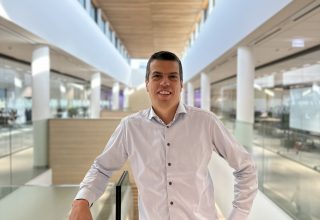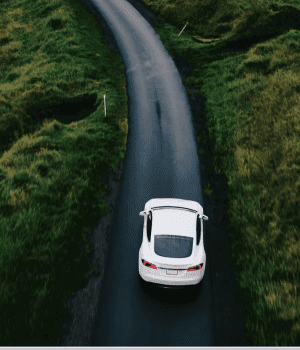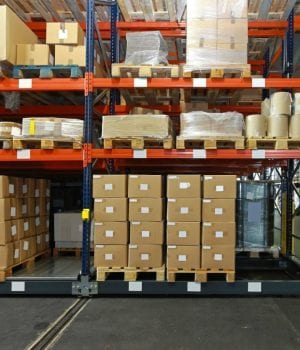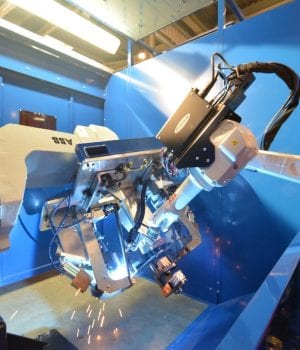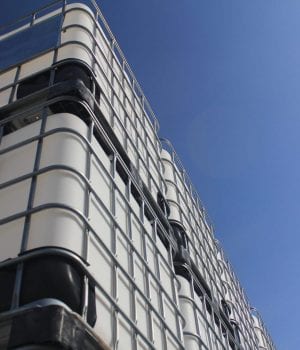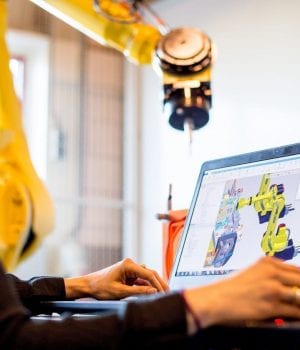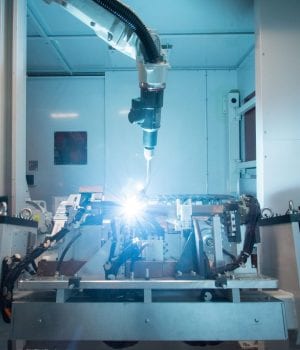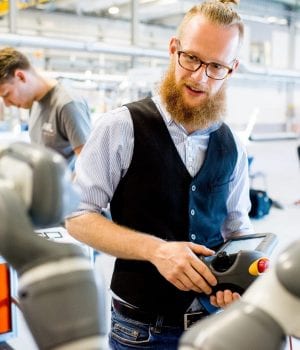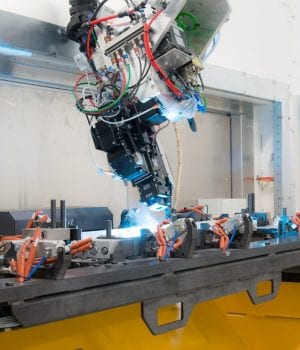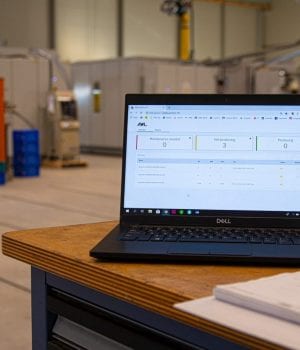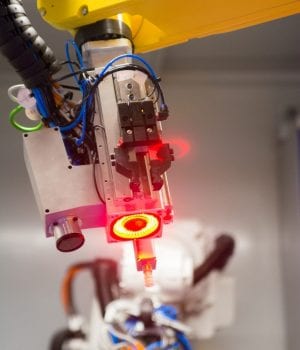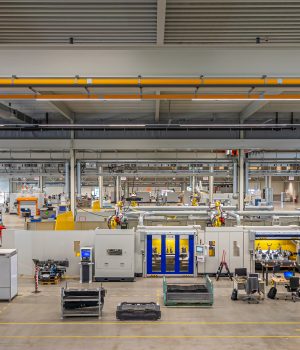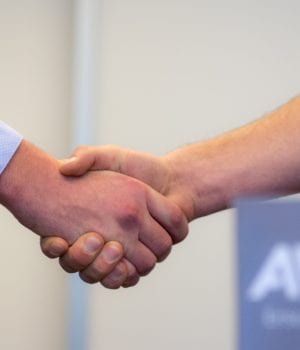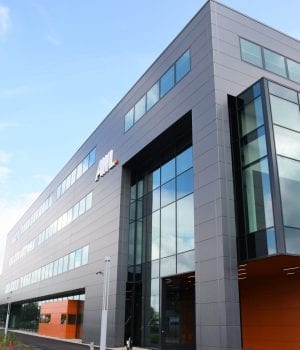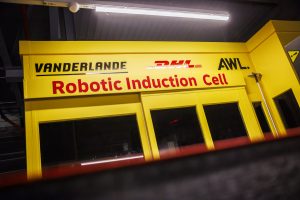Vanderlande & AWL deliver robot technology to DHL
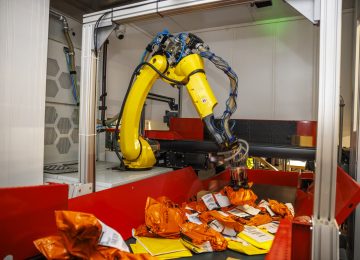
Published on: Aug 8, 2024
DHL Express Madrid Hub has integrated a robot into its sorting process after taking part in a successful pilot project with Vanderlande and AWL. The solution – known as Robot Auto Induct – performed impressively in tests and is now fully operational at DHL’s airport facility, where it helps to service the company’s domestic and international business.
Over recent years, Vanderlande has seen a rise in demand for further automation in parcel depots, many of which are searching for a reliable and efficient way to deal with labour scarcity. To help meet this challenge, the company worked with world-leading robotics specialist AWL to develop a prototype to handle the feeding – or induction – of shipments into the sorting process.
“Induction is one of the more labor-intensive activities within a hub, one that requires many shipments to be placed onto a conveyor before going into the sorting process,” explains Jesse Scholtes, Programme Manager Robotics, Vanderlande. “We realized there was a great opportunity to automate this process using robotics technology.”
Testing and integration
Once the prototype had been developed by AWL, the next step was to show its potential to customers. One of Vanderlande’s key partners, DHL, was invited to view and evaluate the technology. The company was pleased with the demonstration and gave the green light for a pilot project to test the Robot Auto Induct in operational surroundings.
“We were looking for a facility where we could do the validation in a safe environment, but still reap all the benefits that we were expecting from this solution,” says Filip Pax, Director Process Engineering Europe, DHL Aviation. “We chose our Express hub at Madrid Airport because it’s fully equipped with a Vanderlande sorting system, which made the integration easier.
“From our point of view, the key objective of this pilot – and major benefit – was to learn enough about the technology to make a blueprint for further deployments at our other facilities.”
For the installation to be a success, Vanderlande and AWL were aware that the solution had to be stable and reliable. In other words, it had to work when required and deliver constant high quality. “We also had to consider how to fit this robot into our existing process,” adds Filip. “We decided to implement it at the position where a person had previously fed parcels into the sorter.”
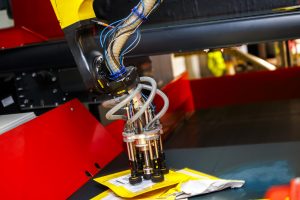
Successful trials
Robot Auto Induct met all those challenges, impressing DHL with what it can bring to the hub’s day-to-day operations. The robot sorts flyers and packages of up to 2kg, providing a processing capacity of 1,500 units per hour with an accuracy of 99%.
“It’s very impressive to watch the robot in operation, especially from an accuracy and speed perspective,” adds Filip. “What’s more impressive is knowing what technology lays behind it.”
“The robot has the ability to identify packages and is capable of learning how to treat each one,” explains Juan Carlos Carretero, Continuous Improvement Director, DHL Express España. “It almost provides a personalized treatment for each package.”
The robot picks items from a heap of shipments – including paper and plastic bags, as well as different types of envelopes. Using a vision system that’s driven by an AI brain, the robot can distinguish individual items and determine their size.
“It can pick a parcel up with its suction cups and, depending on the shape and weight, determine how many of these to use,” explains Jesse. “For example, if it’s a larger and heavier bag, it’ll use all the suction cups, before moving it to the placement belt and releasing it there.”
An image is taken of what has been placed on the belt to indicate if the placement was successful, and to check that the robot didn’t take two items at the same time. That’s how DHL ensures the quality of the robot’s work before picked items are forwarded to the main sorting facility.
“The robot can also distinguish black packaging, as well as those with reflective or shiny surfaces, showing a sophistication that was impossible to imagine even two years ago,” says Jesse. “What impresses me the most is the sheer velocity that it’s able to grab and place items, but also that it is able to distinguish so many shipments that are laying around each other. The speed and the accuracy at which it does this task are remarkable.”
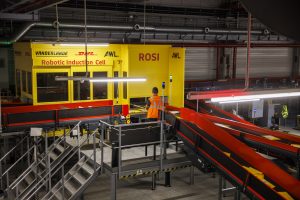
All-round performance
The robot went into full service in November 2022 and is delivering the benefits DHL had hoped for. “The whole idea of introducing this technology is to help our operations where we have difficulties finding the right resources – especially in our night operations,” adds Filip.
In addition to effectively addressing labour issues, Juan Carlos is positive about the robot’s all-round performance. “The benefits it brings are reliability, process quality, process capacity and time,” he explains. “And it allows us to reduce highly repetitive tasks that our employees would otherwise have to perform.”
“For us, this solution is not the end goal,” says Filip. “Working with partners like Vanderlande, we very much look forward to further developing other robotic applications, such as for the loading and unloading of containers. What we are doing in the meantime is preparing our new facilities – such as the Barcelona hub – for the introduction of robotic solutions.”
Read more about robotic singulating: www.awl.nl/rosi
You will also like these blogs:.

Meet The People | Jorgan Newell: From Sales Engineer to Engineering Team Lead at AWL US
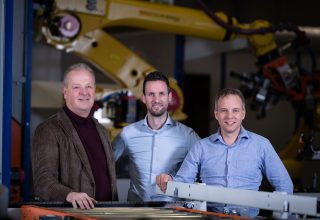
New co-CEOs at AWL as of January 1, 2026

Small footprint, big impact: automating sideskirt clipnut assembly
